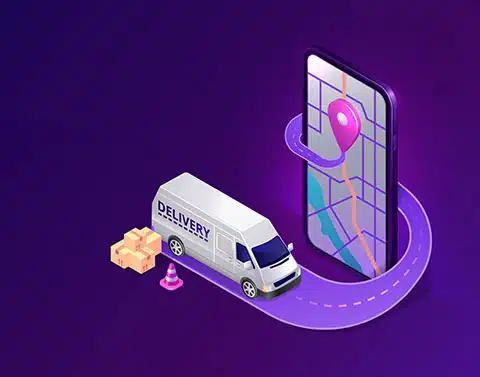The world we live in today is full of instant supply and delivery of goods and services. Be it ordering groceries, booking for a taxi, or seeking salon service right from home. It only takes a push of a button.
In other words, the rise of the On-Demand service Industry has incredibly transformed our lives. It aims at fulfilling every customer’s potential demand by offering them instant access to goods and services they need. As a result, it bridges the time gap involved between service providers and consumers.
According to Harvard Business Review, the on-demand industry registers about 22.4 million users every year with a market value of $57.6 billion. Thus, the sector is attractive to all groups of users.
Besides that, Aspen Institute’s survey of 2016 states that about 42% of American citizens have utilized at least one on-demand service. 22%, approximately 45.3 million users comprising the American adult population, have provided a single on-demand service.
The rise of the On-Demand service industry also became the frontline leader in providing essentials to users during the 2020 lockdown.
But what’s behind the success of the on-demand service industry? The core facilitator of the industry is the existence of mobile internet, GPS-supported devices, and tech-inspired business models.
Now, let’s look at sectors highly affected by the on-demand industry:
Sectors Affected By The On-Demand App Development Industry
Transportation
Long are gone the days we used to stop a cab by waving our hand. Instead, Uber, Ola, and Lyft are the now symbols of the on-demand service industry.
As a profitable niche, many venture capitalists continue to invest a lot in this sector in the rising of the On-Demand service industry. That’s because it is among the most prominent industries that’ll be affected by the on-demand industry’s advancement.
A lot of other companies have come up with apps to offer customers easy and reliable transportation services. As a result, the transport industry has gained a lot in a broader base of loyal customers and great revenues.
Other than using a cab, most people can use platforms such as Zoomcar to rent cars for self-drive hourly.
Food Sector
Besides transportation, food is easily the largest sector affected by the growth of the on-demand service industry.
Websites such as Zomato and UrbanClap are leading the way for food delivery. They allow you to search for your favorite meal, order and pay for a dish and even track the delivery process.
Way back, when we used to place a reorder with our favorite restaurants, they’d automatically conclude that we love their services and will continue to visit the restaurant.
On the other hand, food delivery apps such as Zomato and UrbanClap will remain aware of our order history and know what we order and how frequently we visit their services.
In addition, these platforms provide a lot more data for businesses in terms of consumer behavior that will help them design better strategies and build stronger customer relationships.
So it’s evident that the on-demand sector will continue to grow in the food delivery industry with no sign of slowing down.
Healthcare and Wellness
The healthcare and wellness industry is also affected by the growth of the on-demand service sector.
Initially, patients could wait for long in long queues for medical services. While it may still be evident in an emergency, medical services and products are now accessed with ultimate ease.
It involves searching for the medicine you need, select the quantity, pay, and you’ll have them delivered to your doorstep.
In India, you’ll find platforms like 1mg, TelaDoc, and PharmEasy shaping the on-demand healthcare landscape.
Booking an appointment with your doctor is also more accessible than before. And patients can also receive their medical reports with ease online.
Doctor OnDemand serves like Uber in the health sector. Such apps enable patients to book appointments with their doctors to visit them in their homes.
There’s also a lot of growth potential on blockchain technology, which can improve the efficiency of existing healthcare services by addressing problems such as medical supply chain management that involves numerous actors.
No sign of slowing down. The industry will continue to grow.
Logistics
Logistics is another sector that’ll get affected by the growth of the on-demand service industry.
With the advancement of tech trends, more companies embrace on-demand services such as Uber Freight to transport loads from one place to another. But, just like many other sectors, it’s also a space concern promising by venture capital firms.
Logistics services may also soon start being accessed due to on-demand app development. Although, many have already begun to provide such services for products sold online.
Individuals and businesses can now order a truck at their convenience. Therefore, allowing them to send and track their cargo throughout the journey.
You’ll find platforms such as Postmates and Deliv already succeeding in this area. They have made it effortless to send anything anywhere in the city. Others like TruckBuddy and GetWagon also play a vital role in the industry.
Beauty Industry
The beauty industry is also affected by the growth of the on-demand service sector.
When it comes to salons, customers can now access beauty products and services through a mobile app. They can select a particular time slot for a treatment or book appointments with their favorite hairstylists and beauticians without leaving their homes. With this, you can also easily pay for your beauty products and services.
On the other hand, many salons now allow customers to book appointments right from their website or social media accounts.
With so many platforms available, it’s a matter of time that individuals will start choosing on-demand beauty services over traditional ones such as hair salons.
The beauty products industry is also got effect by the growth of the on-demand service sector.
You’ll find platforms like NailSnaps, which create on-demand nail art services available online. You can now have your nails painted without making any trips to a salon. They also provide unique gifts to customers for sharing their experiences with others on social media.
Why On-Demand Services Need a Mobile Workforce Management System
Proper and efficient management of the workforce is a great challenge for the on-demand service suppliers. Thankfully, the mobile workforce management system comes to help with that.
It allows service providers to manage their workforce more efficiently while offering an excellent user experience. Besides, the mobile workforce management software ensures that the existing gaps between the users, management, and service providers fill.
Since a mobile workforce management system simplifies the administrative task, the entire process of operation becomes smoother.
Below are some of the advantages of using workforce management software for on-demand service suppliers.
Route Optimization
Route optimization is one of the most crucial administrative tasks for all service providers. And that requires a lot of resources, time, and money to design to optimize efficiency.
For instance, some on-demand delivery services must contact multiple customers simultaneously and make several stops before delivering their last package to avoid long routes. Therefore, the workforce management solutions for on-demand service providers are quite helpful in this regard.
It provides real-time information regarding each staff’s current location, such as an ETA, distance, and time remaining to deliver a package. It also helps you reduce the number of empty trips by notifying you when there are no packages left to pick up.
There’s also a possibility of using geofencing to improve the system. Geofencing is most efficient when you’re operating your business in the same city.
You can set a virtual boundary around your business, and whenever an employee enters or leaves this area, the information pops up on their mobile device. This helps them take appropriate action at the right time.
Provides Performance Analysis
Every employee has a different task, skill level, and availability. Therefore, the industry heavily depends on the performance analysis of each individual.
The mobile workforce management software that offers all these features is more likely to help you achieve high efficiency in your business than any other simple or traditional system.
It keeps track of employees’ daily activities, and the result is that you get an idea of their working hours, salary, performance evaluation, and workload. Using this information, you can make necessary changes in your workforce.
Any professional Mobile Workforce Management company for On-demand service providers will guide all businesses to high success by providing real-time data from every single employee along with GPS tracking.
Facilitate Simplification of Operations
A proper workforce management system simplifies the operations of businesses. The best part is that it saves your time and money by enabling you to detect problems in advance and fix them before they have a chance to cost too much.
Plenty of on-demand services are based on appointments. The mobile workforce management services facilitate the scheduling of operations by managing availability.
It makes the operations simpler, boosts user experience, and helps improve the number of loyal customers. In short, mobile workforce software streamlines the service delivery process by making administrative tasks more manageable.
Enable Quick and Effective Communication
The key to effortless communication is to have the apt technology to support your employees and business.
With an online workforce management software, all that is possible. These solutions allow you to communicate with your workers in real-time.
Boosts Customer Satisfaction
The ultimate goal and desire of all on-demand service providers are to increase user satisfaction and experience.
Satisfied customers easily turn into loyal customers, resulting in repeat orders.
The best mobile workforce software enables customers to choose the most convenient option for them. This helps you to outperform your competitors and achieve a higher level of customer satisfaction and loyalty. Furthermore, it tends to request customer reviews which service providers can easily track.
Conclusion
It’s unarguable that the on-demand service industry has brought too much good and continues to be part of our everyday lives. Nowadays, the on-demand service industry has been refurbished to remove time and communication gaps between sellers and users.
While the users’ expectation for faster and effortless delivery system increases, individuals find it an excellent chance to enter and explore the on-demand industry.
This industry has dramatically changed various sectors like Food, Transportation, Healthcare, Beauty, and Logistics. And with their rapid growth, the future looks promising.
The only way to counter the increasing competition is to adopt robust mobile workforce management solutions.
Our experts can help you in developing your on-demand mobile apps.


























